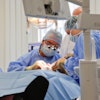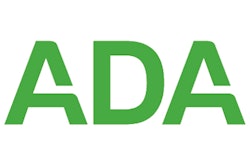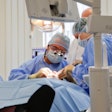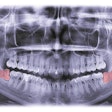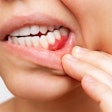
In October 2016, the American Academy of Orthopaedic Surgeons (AAOS) and the ADA Council on Scientific Affairs collaborated to develop appropriate use criteria for prescribing prophylactic antibiotics in managing patients with orthopedic implants who were undergoing dental procedures.
 Tom Viola, RPh.
Tom Viola, RPh.However, more than a year later, the use of antibiotic prophylaxis before dental treatment for preventing prosthetic joint replacement infection remains one of the most hotly contested issues in dentistry. Despite the existence of the criteria, there is still a profound lack of a clear consensus between both orthopedic surgeons and dental professionals regarding the need for this type of premedication.
At the same time, increasing concerns about antibiotic resistance and antibiotic-associated adverse events make identifying opportunities to improve antibiotic stewardship a public health priority. The U.S. Centers for Disease Control and Prevention estimates that antibiotic-resistant infections annually affect at least 2 million people and cause 23,000 deaths in the U.S.
Primary driver
The primary driver of antibiotic resistance is the use of antibiotics, whether appropriate or inappropriate, according to a 2005 study in the Lancet (February 2005, Vol. 365:9459, pp. 548-549). While antibiotics are among the most commonly prescribed medications, 30% to 50% of prescribed antibiotics are either unnecessary or not optimally prescribed, according a study published in the Journal of the American Dental Association (JADA, August 2016, Vol. 147:8, pp. 683-686).
“There is still a profound lack of a clear consensus ... regarding the need for this type of premedication.”
A 2017 study of oral antibiotic prescriptions dispensed during 2013 found that dentists prescribed 24.5 million courses of outpatient antibiotics or 77.5 prescriptions per 1,000 people (JADA, March 2017, Vol. 148:3, pp. 172-178). Of the 10 antibiotics general dentists most commonly prescribed in 2013, most are mentioned in either prophylaxis or treatment guidelines as acceptable options for care when antibiotic treatment or prophylaxis is recommended, according to the same study.
In addition, guidelines have been published for antibiotic prophylaxis for preventing infective endocarditis, but the results of a 2013 study revealed that although almost 100% of dentists were aware of the guidelines and more than 75% were satisfied with it, 19% reported that their antibiotic prophylaxis prescribing practices had not changed since the release of the new guidelines, and 70% said they had patients who receive antibiotic prophylaxis inappropriately because of other physicians' recommendations, patient preference, dentist recommendations, or other reasons (JADA, September 2013, Vol. 144:9, pp. 1030-1035).
Clearly, the issue of growing bacterial resistance to antibiotics commonly used in dentistry because of overprescribing highlights the necessity for the very consensus in appropriate prescribing that is currently lacking. One place to start building that consensus is in adherence to the guidelines for the use of antibiotic prophylaxis for joint replacement infection.
Guidelines
In 2014, the American Dental Association Council on Scientific Affairs convened a panel of experts to develop an evidence-based clinical practice guideline on the use of prophylactic antibiotics in patients with prosthetic joints who are undergoing dental procedures. The purpose was to clarify the "Prevention of Orthopedic Implant Infection in Patients Undergoing Dental Procedures: Evidence-based Guideline and Evidence Report," which was published jointly by the ADA and the AAOS in 2012.
The 2014 panel found no statistically significant association between dental procedures and prosthetic joint infections and no scientifically based efficacy for using antibiotics to prevent these infections. The resulting 2015 ADA Clinical Practice Guideline states, "In general, for patients with prosthetic joint implants, prophylactic antibiotics are not recommended prior to dental procedures to prevent prosthetic joint infection." These guidelines were published in JADA (January 2015, Vol. 146:1, pp. 11-16).
However, the 2014 panel did acknowledge that a clinician may consider antibiotic prophylaxis in special circumstances, despite the lack of scientific evidence. Unfortunately, the panel did not indicate what those special circumstances might be.
Since there was weak evidence that some patients with certain medical conditions, diseases, and disorders may be at higher risk of experiencing prosthetic joint infections, the AAOS moved to collaborate with the ADA to participate in developing criteria to assist both orthopedic surgeons and dentists in managing the care of these patients.
In September 2016, the AAOS published its "Appropriate Use Criteria For the Management of Patients with Orthopaedic Implants Undergoing Dental Procedures." In 2017, the ADA also issued guidance (JADA, February 2017, Vol. 148:2, pp. 57-59) for using the criteria in managing these patients:
- There is no evidence to support an association between dental procedures and risk of experiencing prosthetic joint infections.
- The criteria are a decision-support tool to supplement clinicians in their judgment regarding antibiotic prophylaxis for patients with a prosthetic joint who are undergoing dental procedures. They are not intended as the standard of care or as a substitute for clinical judgment.
- Discussion of available treatment options applicable to each patient relies on communication among the patient, dentist, and orthopedic surgeon, weighing the potential risks and benefits for that patient.
- It is appropriate for the dentist to make the final judgment to use antibiotic prophylaxis for patients potentially at higher risk of experiencing prosthetic joint infections (independent of dental treatment) using the criteria as a guide, without consulting the orthopedic surgeon.
- The 2015 ADA clinical practice guideline is valid and should continue to inform clinical decisions for dental patients in ambulatory settings. The guideline states clearly that the evidence fails to demonstrate an association between dental procedures and prosthetic joint infections or any effectiveness for antibiotic prophylaxis. Given this information in conjunction with the potential harm from antibiotic use, using antibiotics before dental procedures is not recommended to prevent prosthetic joint infections.
Along with the publication of the criteria, the AAOS also makes available a web-based decision support tool that may be accessed here. The tool provides a detailed description of its purpose, along with easy to follow instructions and, thus, simplifies the use of the criteria on an individual patient basis.
Thomas Viola, RPh, is a clinical educator, professional speaker, and published author in the areas of oral pharmacology and local anesthesia. Tom is a member of the faculty of 10 dental professional degree programs. For more information on this and other pharmacology topics, as well as a list of dates and locations where you can attend his latest seminar, visit his website at www.tomviola.com.
The comments and observations expressed herein do not necessarily reflect the opinions of DrBicuspid.com, nor should they be construed as an endorsement or admonishment of any particular idea, vendor, or organization.

